All Models Are Wrong, But Some Are Useful (2022)
Dave Atkins
An elephant walks into a bar, where an architect, a forest owner, a developer, a tech sustainability manager, and the head of an environmental organization are having a drink. They are all blind. Each encounters a different part of the elephant: one the trunk, one the tail, one the ear, one the leg, and one hears it trumpet. When asked to describe the elephant, the one who encounters the trunk says it is very similar to a boa constrictor, the tail generates the description of a thick rope, the ear is described as a large fan, the leg is likened to a tree, and the listener says it must be a tugboat.
Sustainability is the elephant in the room that we all want to achieve. We all, however, have our own ideas about what that looks like. Each of the people in the bar gave an accurate description of the part of the elephant they encountered, but without working together and sharing information, none of them completely understands what it is.
We all know about the dire warnings issued by the Intergovernmental Panel on Climate Change (IPCC) and the speeches given in Glasgow at the United Nations Climate Change Conference (COP26). The business world has weighed in: investment and insurance firms have expressed grave concerns about the effects of climate dis ruption on economic values, and the US Chamber of Commerce stated about a year ago that climate change is happening, and it is caused primarily by humans. The chamber also said that businesses are essential to solving this problem and that a market-based policy solution is needed to drive businesses to change their behavior.
So, how do we transition to a low-carbon society?
In the built environment, a variety of certification systems and modeling tools have been developed to support creation of more sustainable buildings, providing tremendous examples of net-zero buildings. These certification systems include Leadership in Energy and Environmental Design (LEED), Green Building Initiative (GBI), and the Living Building Challenge (LBC). These systems have shown us what is possible and have created standards and guidelines to steer users through the process. Models have been developed to assess the carbon footprint for the use and maintenance of buildings, and, in more recent years, much of the focus has been on embodied carbon content. That has been accompanied by the recognition that a rapid reduction in emissions over the next 8 years to achieve the goal of a ~50 percent reduction by 2030 and net zero by 2050, must be led by reducing embodied carbon. They are sunk costs once expended, whereas the use and maintenance carbon can be ameliorated by the continuing shift away from fossil energy sources.
The desire to change the embodied carbon has driven the excitement about and expansion of the use of wood in place of fossil-energy-intensive materials, given the carbon storage wood provides and the reduction of greenhouse gas (GHG) emissions from comparative manufacturing processes for materials such as aluminum, steel, and concrete. Life Cycle Inventories and Analyses (LCI/ LCA) and modeling tools that allow architects, engineers, and others to make comparisons have proliferated. Along with those have come debates about the appropriateness of the assumptions that have gone into some of the modeling efforts at the building level, but more so in the sourcing of wood and the management of forests.
We explore some of these critiques (with links/references) here, and reflect on how the critics’ view of the elephant can slant their perspective of what “sustainable” means. We ultimately anchor back to our title: “All Models Are Wrong, But Some Are Useful.” This essay will focus on both parts: “some are useful” and “all models are wrong,” as we work to avoid having the perfect become the enemy of the good. This essay does not pretend to be the final word on carbon in wood and forests and their role in helping solve climate disruption; rather the goal is to provide information and context that will help us all better describe the elephant and continually improve.
MODELING TOOLS FOR THE BUILT ENVIRONMENT: LCI/LCA
Life Cycle Inventories (LCI) contain the data that underlies the Life Cycle Analyses (LCA). LCAs are used to examine the environmental effects of different materials, including their Global Warming Potential (GWP) and their effects on water, eutrophication, ozone, and more. They are the basis for the Environmental Product Declarations (EPD) that are used to compare products. There are international standards (ISO 14044, 21930) that govern the processes to be followed to ensure standards are consistent and allow for comparisons, just as the various building and forest certification systems have criteria and standards that provide accountability through verification and modeling for transparency and credibility. These sources provide transparent information for people working in the forest and in the built-environment sectors so they can understand the sources of their material and some of the environmental consequences of its use.
A suite of tools has been developed in recent years to help designers, developers, engineers, and contractors make choices among products, assemblages, and Whole Building Life-Cycle Analysis (WBLCA). These tools are useful at various stages, from conceptual design to detailed planning to procuring the materials for the built environment. The tools include open source nongovernmental organizations (NGOs), university- and government- supported tools, and proprietary company- built tools.
Good sources for these models include these:
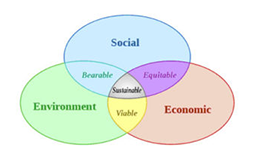
FIGURE 1: SUSTAINABILITY VENN DIAGRAM
- The Carbon Leadership Forum (CLF): A collection of architects, engineers, contractors, material suppliers, building owners, and policymakers who are taking bold steps to decarbonize the built environment, with a keen focus on eliminating embodied carbon from buildings and infrastructure.
- Consortium for Research on Renewable Industrial Materials (CORRIM): It is made up of a multitude of universities, government groups, and trade associations. CORRIM conducts and manages LCA research on the environmental impact of production, use, and disposal of forest products.
- Athena Sustainable Materials Institute: A Canadian membership-based nonprofit research collaborative bringing LCAs to the construction sector. Other proprietary tools have been developed by individual firms.
This list has been rapidly growing and changing as new information and products are developed and evaluated, and these sites help the industry stay current. The LCI, the database of information used to conduct the assessments, is vital to the process.
As with any human endeavor, people have different perspectives on exactly how the work should be done and support their favorite approach.
Sustainability can be especially challenging because it requires finding the sweet spot where solutions work socially, environmentally, and economically, and doing so requires tradeoffs. If you are a publicly traded timber company, you are holding a different part of the elephant than if you are an environmental NGO, or if your focus is on labor, local residents, and/or indigenous rights.
HOW ARE THESE TOOLS USEFUL?
Education and awareness: Whether targeting practitioners, clients, investors, government officials, or the general public, models are great tools to show people why it is important to consider embodied carbon and how it is accounted for. A valuable result of practitioners’ repeated use of the models is the development of an intuitive understanding of the choices involved and their relative magnitude. The development of this intuitive understanding is extremely valuable to firms operating in this arena as their staffs can move more quickly through the decision-making process without running the model every time. Studies published in January 2022 as part of a special issue of Sustainability offer examples from China, Chile, Austria, and the US. The results varied as a result of their location but all showed a substantial reduction in embodied carbon.
Comparing materials and methods: Whether comparing different structural components or insulation choices for specific applications, WBLCA can facilitate the evaluation of alternative designs. Figure 4 compares the carbon footprint of wood fiber insulation with fiberglass, mineral wool, spray foam, and extruded polystyrene.
Accountability: Finally, the models and their outputs provide methods of verification and accountability, demonstrating what has been accomplished or what could be accomplished with new policies. This is vital to meeting the requirements of various voluntary certification systems. But it is also becoming important to meet regulatory requirements, as some local governments are establishing embodied energy standards for materials and buildings. The voluntary carbon offset sector is expected to grow as a result of agreements made in Article 6 at COP26, based on the Task Force on Scaling Voluntary Carbon Markets (TFSVCM). Monetary rewards could result from reducing the embodied carbon in buildings. As a quantifiable, verifiable carbon savings technique accomplished at the time of construction, this could help accelerate the movement to low-carbon material choices. A crucial element of this effect will be the price of the avoided carbon, which has been increasing.
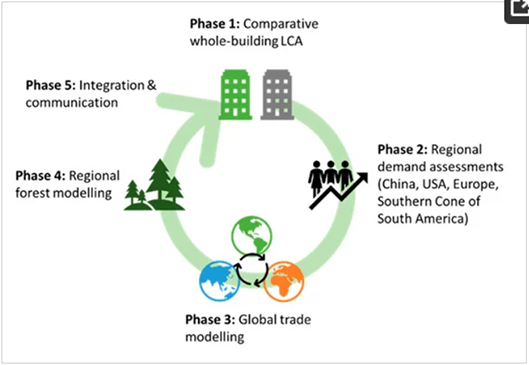
FIGURE 2: FIVE PHASES OF GLOBAL MASS TIMBER IMPACT ASSESSMENT
Source: https://www.mdpi.com/2071-1050/14/2/758/htm
The Nature Conservancy initiated, with a variety of partners, a huge research effort to examine the potential for mass timber use in buildings worldwide to reduce carbon emissions and store carbon in the built environment. It is also examining the potential for a sustainable supply of wood to meet the potential increased demand.
Some results of the first three phases were published in the special issue of Sustainability in January 2022. LCAs were conducted to compare buildings in three parts of the world: China, the US, and Europe. The bottom line was the use of mass timber was beneficial in all locations. Analysis of the US’s ability to meet demand from existing forests on a sustained basis was validated, based on the US Forest Service’s Forest Inventoryof plots across all ownerships. The remaining research to be done by 2023 will complete the regional forest modeling, and, most importantly integrate the results of all phases. The Nature Conservancy is working on what it calls the 3S Framework (see sidebar) modeling, the carbon effects from the forest to the building. The three S’s are sequestration of carbon in the forest, storage in buildings, and substitution of lower embodied carbon materials for higher.
HOW ARE THESE TOOLS WRONG?
All models are built upon assumptions and data sets, as well as the current state of product availability. The data sources can never be complete, given the variation in companies, their manufacturing processes, differences in transportation, and sources of raw material. Assumptions about the longevity of the building, the method of its disposal, and the potential for reusing materials versus landfilling can all influence the results. However, good data collection, management, and use can minimize the errors inherent in the modeling process. The largest point of contention surrounds the management of the forests and whether sustainable harvesting and conversion of trees to wood products that can substitute for carbon- intensive materials is better than letting the forests grow and continue to store more carbon. The assumptions made when approaching this fundamental question are crucial.
The Forests Dialogue (TFD), an effort to address a variety of international forest issues, is hosted by the Yale School of the Environment. They took on the issue of Climate Positive Forest Products (CPFP), focusing on mass timber and the potential growth of this sector worldwide, and the potential benefits and pitfalls. A valuable background paper prepared for a TFD event in April 2021 provided an excellent synthesis of the areas of agreement and disagreement around the expanded use of mass timber in North America, Europe, and elsewhere in the world. We have drawn upon that, along with other sources of information, to provide you with some insight into this topic. For an in-depth exploration, access the background paper and the Co-Chairs Summary Report that also identifies next steps. Keep in mind that TFD is a global dialogue, and the issues it raises vary depending on the region under discussion. The initial meeting showed the value and importanceof keeping the dialogue moving forward as the discussions revealed many folks had a hold on different parts of the elephant, and the dialogue helped all the participants to better understand what the whole elephant looks like.
If the models are looking at long time spans, the validity of their assumptions become more tenuous than in the near term. What follows is an exploration of some of the critiques of LCAs related to mass timber, the places they can potentially go wrong, and the ramifications of those errors.
One critique relates to the substitution benefits of using wood versus fossil energy in calculating the carbon content of building materials. Graphics such as Figure 3 show that the substitution benefits are unchanged over long periods. Critics point out that this doesn’t reflect likely changes in the carbon content of the alternative materials. In fact, the whole purpose of COP26 and the LCAs is to ensure our relationship to fossil carbon changes.
Nonfossil energy production is increasing worldwide, changing the carbon content of alternative materials over the next few years and decades. Ongoing research and development work to reduce the carbon dioxide intensity of concrete is in the works and has been done. The use of nanocellulosic wood in concrete is reducing emissions by 15 percent to 50 percent. The first use of it in a bridge in California has been demonstrated. Using biochar as an additive significantly reduced emissions in research trials. Adoption and acceptance of new technologies may take at least a decade, given that it took more than a decade with mass timber. So the critique of the graph is valid in the timescale. The substitution benefits in the buildings completed in the past 10 years, however, are very real and can be expected to be similar in the next 5 to 15 years. This is substantiated by the many LCAs completed and published in many parts of the world. This time frame is of utmost importance for meeting our GHG emission goals worldwide.
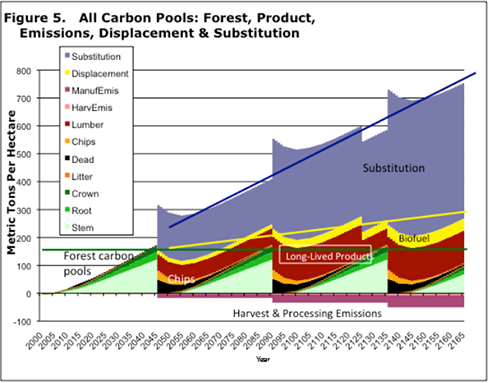
FIGURE 3: SUBSTITUTION BENEFITS
Source: CORRIM Factsheet #5
The critics of the substitution benefits generally don’t point out that in addition to changes in the carbon content of fossil-energy-intensive materials, the use of wood residues is changing. For long-lived projects, 56 percent of the log is residue rather than lumber. Some of the wood residue goes into fiberboard products that can have long lives in furniture and other composite materials. But with the development of wood fiber insulation, as at the GO Lab plant in Maine that is under construction, we can see residue not only from manufacturing but also the potential for residue from harvesting becoming feedstocks for long-lived products in the built environment.
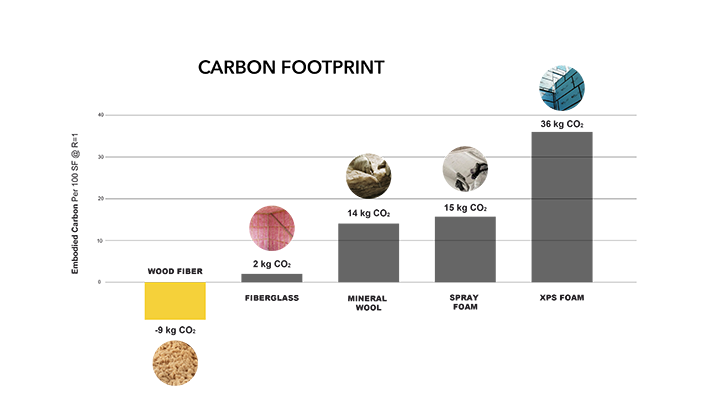
FIGURE 4

Other new products created from residue are products from Made of Air. They are using wood residue-based biochar (90 percent) and sugar cane residue (10 percent) to make bio-based thermoplastics. These are used in a variety of products ranging from sunglass frames to building cladding. The biochar carbon is captured for centuries to millennia. The process of making the biochar produces syngas that can be used for bioenergy. The result is called BioEnergy Carbon Capture and Storage (BECCS). Incorporating the char into structures made from mass timber further adds to the long-term storage of carbon derived from natural carbon solutions and is another step toward making cities carbon sinks.
In carbon discussions, people often get fixated on the long-lived product, discounting the carbon value and importance of short- to medium-term products. Even when these products are relatively short-lived, they are displacing materials made from petrochemical plastics that have a high embodied carbon content. The production and use of paper, cardboard, and other packaging from a renewable wood residue source that can be recycled multiple times, is biodegradable, and can be returned to the soil are all important to a low fossil-carbon circular economy. Cardboard is recycled at about a 90 percent rate, and the fibers can be reused 5 to 7 times.
The critique showing new substitution benefits 50, 100, and 150 years out is valid, but it doesn’t mean anything in terms of the actual benefits achieved next year or likely 10 years from now. The take-home point is that substitution benefits are real in the near term, and that is what counts.
Another critique relates to the carbon differential between harvesting and using the wood versus continuing to let the forest grow, but the “let-itgrow” advocates typically ignore natural disturbances when they show the carbon storage line steadily increasing. Wildfires, windstorms, and insect and disease outbreaks occur and dramatically change the ability of the forest to capture carbon dioxide and release substantial amounts of carbon. A combination of disturbance events, such as 2 fires within 10 to 30 years of each other or an insect epidemic followed by a wildfire, can cause significant fluxes of carbon to the atmosphere. This was evidenced by repeated fires in large wildernesses and Yellowstone National Park, for these areas have been managed to allow natural processes to operate as much as possible. It is essential, therefore, to make these discussions specific to forest ecosystem and region.
In forests with much longer intervals between natural disturbances, the risk of carbon loss is lower and the potential for growing more wood and capturing more carbon for use in buildings is very real. A research paper from 1995 showed that coastal Douglas fir, when commercially thinned, can extend high growth rates out to 117 years if no disturbances occur. Thus, there are ways to achieve more growth and to continue to harvest logs. It doesn’t have to be an either/or proposition. We can have more wood and more carbon stored in the forest. We are already seeing the natural disturbance regimes being altered by climate change, however, as evidenced by the 2020 wildfires in western Oregon.
The let-it-grow approach is also dependent on discounting the product substitution benefits, which, as discussed earlier, is not reasonable for the next decade or two.
Another critique addresses the starting point of the forest and carbon stocks at the time of harvest. Are you starting with an old-growth forest in the Pacific Northwest at the time of harvest or a forest that is on a sustained harvest on a cycle of 40 to 80 years? Old-growth forests have substantially higher carbon stocks at the initial harvest and thus will have an extended period where carbon is released from the large accumulation in the downed logs, litter, and duff. The result is a continual release of carbon greater than what the new forest will capture in its next rotation. With established, sustained rotations, the additional carbon release is not an issue. Knowing the source of the wood can be important, but in the US, the harvesting of old growth is minuscule. The vast majority of softwood lumber comes from private lands in which old-growth forests, if they were such, were harvested 1 to several cycles ago.
This discussion gets conflated when old growth is used as a synonym for primary (or virgin) forest— a forest that hasn’t been harvested before. This assumption is problematic in many forests where the natural disturbance regime can mean very little carbon is stored beyond the existing trees. Again, the disturbance regimes are an important factor to consider.

FIGURE 5: QUANTIFICATION MASS TIMBER CLIMATE BENEFITS AND IMPACTS
Source: TFD background paper
Climate Smart Forestry (CSF) or Improved Forest Management (IFM) are other terms that are surfacing more often and can mean different things to different people. These terms are often used when referring to management techniques that can capture more carbon and make more wood available. These techniques can include controlling competing vegetation, including other trees, to enhance the growth rate of desired trees that can capture more carbon and can effectively be turned into long-lived wood products. The American Forest Foundation and The Nature Conservancy have initiated the Family Forest Carbon Program, which is helping small landowners access carbon-offset markets by applying one of these practices so they can get paid to store more carbon and coincidentally have more wood to harvest at the end of their contract. At COP26, Article 6 was adopted to incorporate rules for the application of the transparent methods developed by the Task Force on Scaling Voluntary Carbon Markets (TFSVCM). Natural carbon storage is part of this article. The opportunity to leverage corporations, governments, and more to invest in improved forest management for carbon benefits is significant.
Many people also use these terms when describing “defensive carbon management.” This involves helping the forests adapt to shifting climatic conditions, including more drought, more fire, more insect attacks, and so on. Many Western forests—especially public ones but private as well—are too crowded, making them vulnerable to wildfire, defoliating insects, and bark beetles. The carbon (trees) needs to be removed, leaving the species that are more resistant to drought, fire, and insects. Making these forests more resilient can help them continue to capture and store carbon and provide more wood in the future, but the immediate effect is to draw down the stocks of carbon.
What is the point of illustrating all these potential and real errors associated with LCA, building models, forest models, and the like? The graphic above (Figure 5) shows us the greatest point of difference is over forest management, and it needs the most attention to effectively move forward. It is important for us all to step back from the details of forest modeling and try to see the whole elephant. If we myopically focus only on carbon, we are likely to cause other problems, whether they be with our watershed values; our biodiversity values; our economic values; or our esthetic, spiritual, and recreation values. Forests provide multiple benefits; some are managed for a sustainable supply of wood, and others are managed for special features, including biodiversity or recreation.
Many forests are managed for a blend of these values; they provide some wood, but that is not their primary purpose. They might be a crucial watershed for an urban population or for agricultural irrigation, or they might be primarily recreational. Forests are not a binary choice. In the US, 38 percent of the forestland is owned by “family forest owners,” a group with as diverse a set of management goals and objectives as you can imagine. Bringing them into the mix for management of carbon, wood, wildlife, water, recreation, and resilience to climate change is vital. Only ~18 percent of forest land is corporately owned and dedicated primarily to wood production.
We can focus on what is wrong with models and argue specific points of disagreement, or we can realize forests and all their values are important and use the models to guide our discussions, identify the sticking points, and work to understand one another’s perspectives and reasons for skepticism. We can then work to bring new and better information to the dialogue so that we can build trust.
Yes, all the models are wrong, but they are useful in helping us confirm the importance of efficient, efficacious management throughout the whole supply chain, from the diversity of forest purposes to constructing the building to deconstructing the building for material reuse. The continual striving for improvement of the data, the models, and the management are essential to achieve our goals. The Climate Smart Forest Economy Program is an effort to help us all work in this direction.
A final closing thought is that, if we don’t get lost in the details, the models can help us think through and discuss all the different aspects of the sustainable elephant. The models can illustrate different scenarios, pathways, and alternate choices to better help us understand the ramifications. It is essential that the collection of interests, with all our different areas of expertise, share those perspectives. That way, we can reach the shared goal that each of us holding a part of the elephant will listen and envision what is being shared and gain a better understanding of the shape and contours of this giant, called sustainability, that is key to our collective success.
3S FRAMEWORK FOR FORESTS: An Overview
Forest protection, restoration, and management are increasingly being recognized as important actions to mitigate climate change. But crucial gaps still remain in our understanding of the full opportunities forests can provide: as carbon sinks that require conservation and restoration; and as sources of sustainable forest products (e.g., mass timber as a building construction material) that store carbon and substitute for fossil-based materials. A holistic perspective is needed to support policymaking, investment decisions, and actions that balance the function of forests and sustainable forest products for climate, environmental, and social benefits.
Forest systems and sustainable forest products—specifically wood for use in construction—are complex systems. Linking these two systems involves a creating a system in itself that does not now exist. Forestry practices are not accounted for, for example, when assessing the climate mitigation potential of the wood products used in construction. Carbon tends to be expressed only through building materials, and the impacts are widely misrepresented until building materials get to site.
We are, therefore, developing the 3S Framework for forests: a tool for stakeholders across multiple sectors to assess how their choices can maximize the climate change impact of forests and sustainable forest products. The tool will help compare different scenarios in terms of carbon absorption and sequestration (the sink function); carbon storage (the biocarbon stored in forest-based products); and carbon substitution (the fossil carbon emissions avoided).
The 3S Framework is a robust analytical tool that can calculate carbon impacts and allow various stakeholders to assess how their choices can maximize the potential of forests and forest products to mitigate climate change. The 3S Framework provides a snapshot of carbon cycling between buildings and a forest ecosystem. These are also the major components that make up the 3S Framework. In its current version, the framework quantifies the storage of carbon in cities (e.g., buildings) or ecosystems (e.g., trees), in addition to the transfer of carbon from a forest ecosystem to a building. It also simulates associated emissions of carbon into the atmosphere from manufacturing and construction of timber buildings and their steel/concrete counterparts, enabling comparison of respective carbon emissions.
We are developing this framework and are eager for input from across the stakeholder spectrum. We’d like to know:

- Does this tool sound like something that might be useful for you?
- If no, why?
- If yes, how would you use the tool, and how does it fill gaps in your knowledge of your project? Please proceed to the following to complete a short survey:
We are in the final stages of developing and testing the tool on a range of case studies. The prototype of the framework will be completed in autumn of 2022. If this tool sounds of interest, and you’d like to discuss your feedback further, please get in touch with Rachel Pasternack, rachel.pasternack@tnc.org.
The 3S Framework is a collaborative project developed by The Nature Conservancy and Dr. Galina Churkina, in partnership with the Climate Smart Forest Economy Program (CSFEP). This project is supported by the Good Energies Foundation.
Download PDF
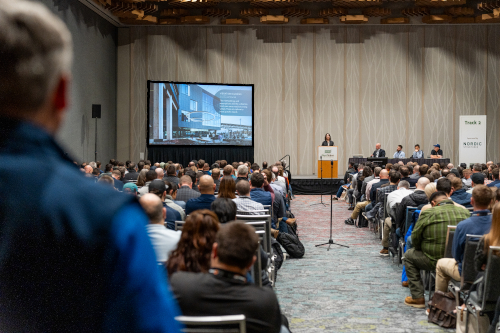 View the Agenda
View the Agenda
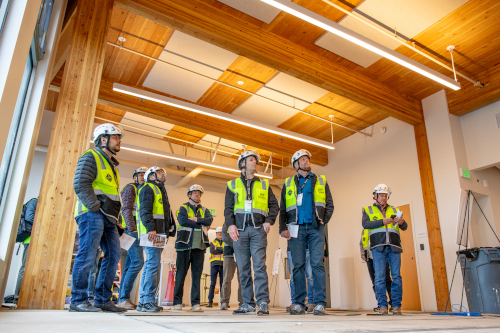 Book a Building Tour
Book a Building Tour
 Book Your Exhibit Space
Book Your Exhibit Space
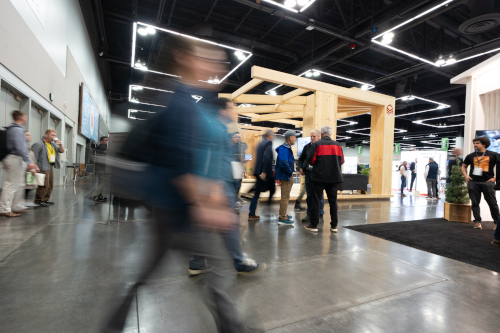 Explore the Exhibit Hall
Explore the Exhibit Hall
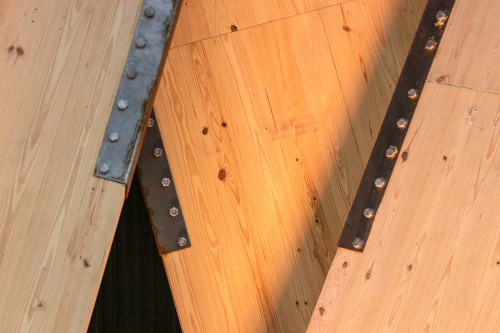 Become a Sponsor
Become a Sponsor
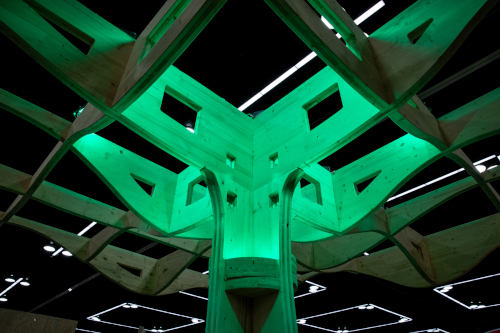 View Sponsors & Partners
View Sponsors & Partners
 Reserve Hotel Rooms
Reserve Hotel Rooms
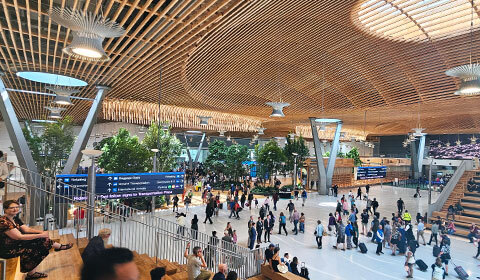 Discounted Plane Tickets
Discounted Plane Tickets
 Read Case Studies
Read Case Studies
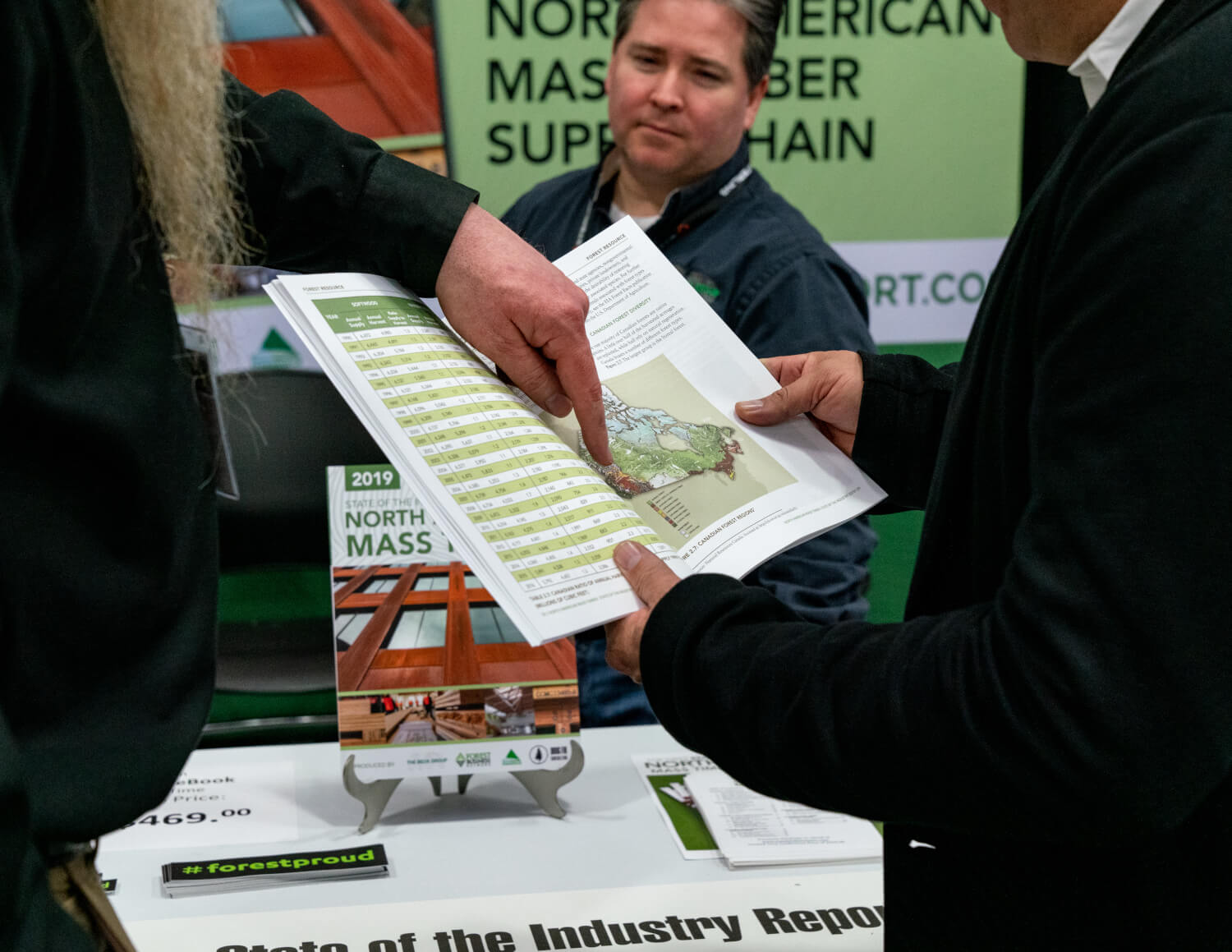 Purchase Past Reports
Purchase Past Reports